Imagine this: never having to pick up a phone to cold call or relying on other companies’ lists of leads that are never as good as you want them to be.
Now imagine this: all of your real estate leads and clients come to you without the need to advertise aggressively in their faces to grab their attention.
How can this be done?
Through real estate content marketing.
Attracting customers by offering hyper-relevant and useful content is on the rise, to say the least.
According to Google Trends, it hit a popularity peak in September of 2017 but is still much higher than it was in the past.

But what is content marketing exactly?
Google defines it as:
A type of marketing that involves the creation and sharing of online material (such as videos, blogs, and social media posts) that does not explicitly promote a brand but is intended to stimulate interest in its products or services.
Customers are sick of being advertised 24/7. They see enough ads in one day to stick in their subconscious mind for years.
In fact, 91% of consumers agree that ads are more intrusive than they were two to three years ago.
This is why we need to start thinking about marketing differently, and content is at the heart of it.
Producing high-quality content builds trust with customers, improves their lives, and turns your real estate business into an authority.
If you’re interested in achieving these things, keep reading.
Step 1: Identify your ideal real estate customer
What type of real estate customer do you mostly work with?
Commercial? Residential? A blend of both?
The first step before producing content is to create an outline of your ideal customer, which allows you to create hyper-targeted material for them.
For example, you wouldn’t talk about residential real estate on your website if you only worked with commercial customers.
Here are some things to brainstorm.
What problems do they experience?
Creating content that solves problems is the name of the game.
This is why you need to identify which problems your customer base faces on a regular basis.
Imagine you work with mostly first-time home buyers.
They probably experience issues with down payments, finding a suitable home, organizing their finances, etc.
Write these down in a Word Doc, spreadsheet, or another file to stay organized.
Look back at previous customers you’ve worked with, too. What problems did they explain or mention along the way while working with them?
You can also ask this question to new or existing customers to continually mine new information.
If you want to get into the heads of customers, I also recommend looking at competitors’ reviews and reverse engineering them.
Here’s what I mean…
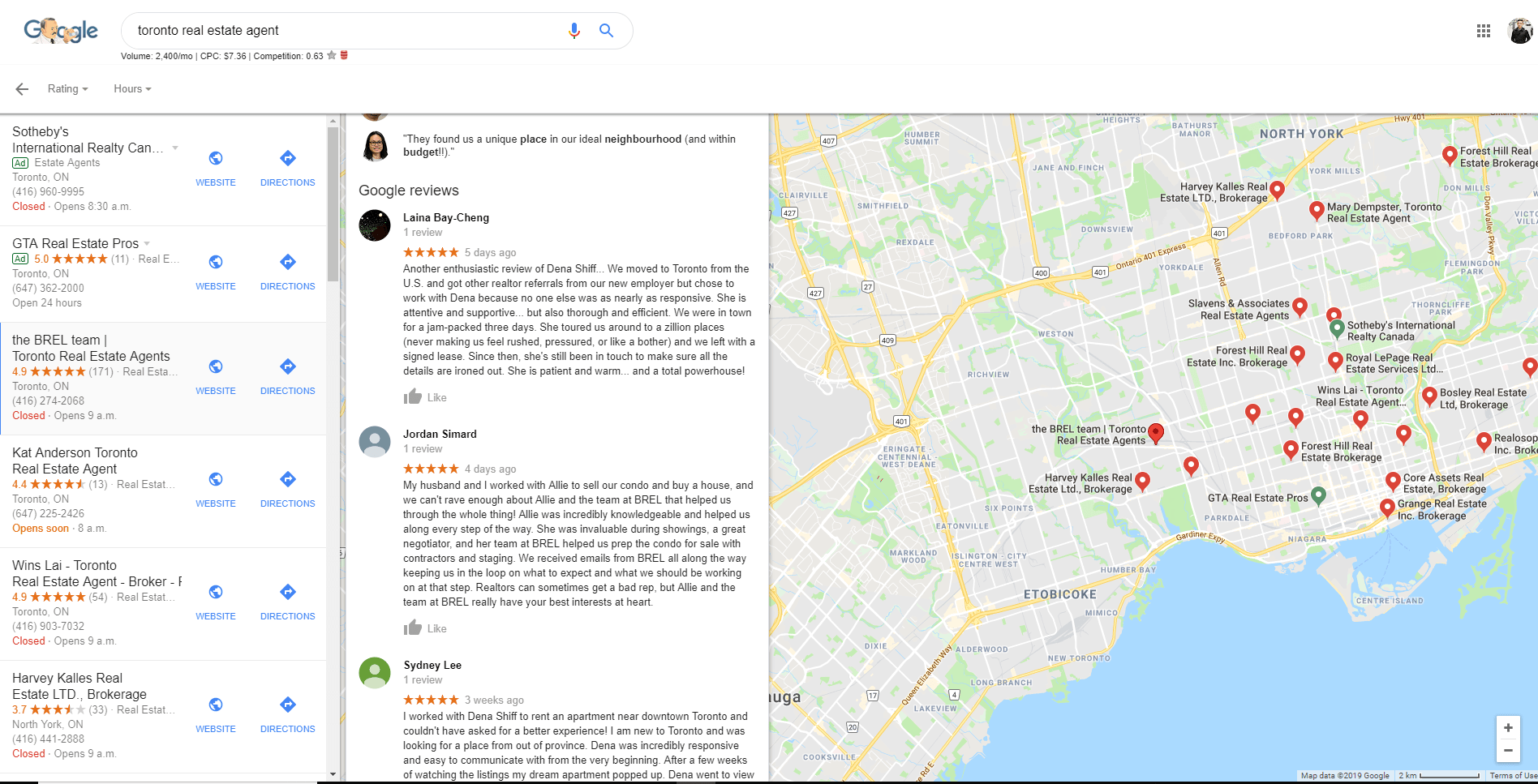
These are a few reviews from a Toronto real estate agent.
If we were to analyze them, there are important nuggets of information we could extract like:
- They moved from other countries to Toronto.
- They valued responsiveness, personality, and attitude.
- Customers would see many places before settling.
- Showings, negotiating, and staging were important steps for them.
- They needed help putting in an offer and dealing with the competition.
These can then be flipped into problems or questions, such as:
- How do you move to another city?
- How do you negotiate rent?
- How much do you offer for a house?
- What do you ask at a showing for a home?
- Etc
What are their demographics?
There are two types of demographics.
The first is the age-old type, which consists of income, age, education, and all of that boring stuff.
The second type of demographic is something I learned in a book called The $100 Startup, which consists of feelings, beliefs, and desires.
They are both important, however.
You wouldn’t talk the same way to first-time home buyer millennials as you would with baby boomers purchasing a new investment property.
Similarly, they are both experiencing many different feelings, thoughts, and values.
That’s why you need to begin fleshing out the general demographics of your customers. Once again, take a glance back at your customer base over the years, and ask yourself:
- What was their average income?
- Where did they live?
- What was their education level?
- How old were they?
- Were they married or had children?
The next set of questions would be:
- What feelings do they have about purchasing a new property? (Nervousness, excitement, indifference, seriousness, etc.)
- What do they believe about the property purchasing process? (It’s difficult, they require a lot of capital, they don’t understand what rights they have, etc.)
- What do they value? This might include family, living in a nice neighbourhood, saving for retirement, etc.
If you don’t have access to this information right now, don’t worry.
Begin asking future real estate leads questions like these to begin forming a solid buyers persona.
Additionally, using some emotional intelligence will go a long way.
What I mean by this is that you don’t necessarily need all of the latest data, market reports, and fancy information to determine these things about customers.
Putting yourself in their shoes will allow you to get a good idea of what they’re experiencing, and it’s a serious life and business skill that will take you far.
Gary Vaynerchuk touches on this in a quick video below.
Step 2: Brainstorm topics they would care about
Okay. You know your ideal real estate client like the back of your hand.
Now what?
Time to research topics with the information you’ve organized.
At this point, you should understand your customer’s problems, questions, and demographics.
I suggest using a free tool like HubSpot’s blog idea generator.
Type in a keyword related to a piece of content you’d like to produce. I’ll enter “commercial real estate” as an example.

Click “Add” and “Give Me Blog Ideas” afterward.

You can then click through the various content ideas it generated for inspiration.
Organize topics into a content calendar. This is a spreadsheet that holds all of the month’s content you will be publishing.
Feel free to include columns for date, topic, SEO keywords, format, word count, and other important aspects.
Here’s an example of what one looks like:
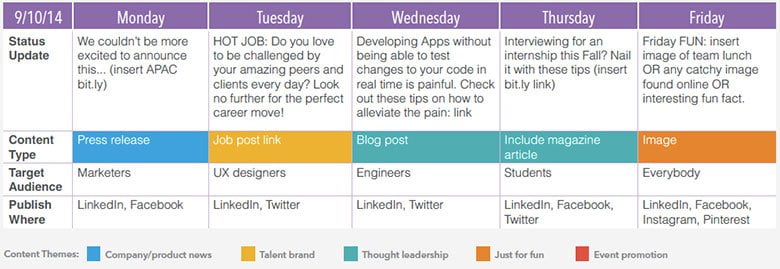
Let’s also quickly discuss SEO, as it will be the bread and butter of generating traffic from your content.
And if you need help writing, try out the AI copywriting tool Jasper.
Step 3: Optimize for search engines
Optimizing real estate content for search engines consists of two steps.
The first is researching search terms that you can target and telling Google what your page is about.
This will help you rank for these terms, driving relevant organic traffic to your real estate website.
This brings us to the second step of optimizing each page individually.
Let’s take a look at both of them in-depth.
Researching keywords
Every piece you content you produce, whether it’s a blog post, video, or podcast episode, needs to be focused on specific search terms.
Use a keyword research tool like Wordtracker to find ideas by entering a keyword and clicking “Search.”

On the left sidebar, you will find keyword suggestions, and related terms to what you entered can be found in the center section.
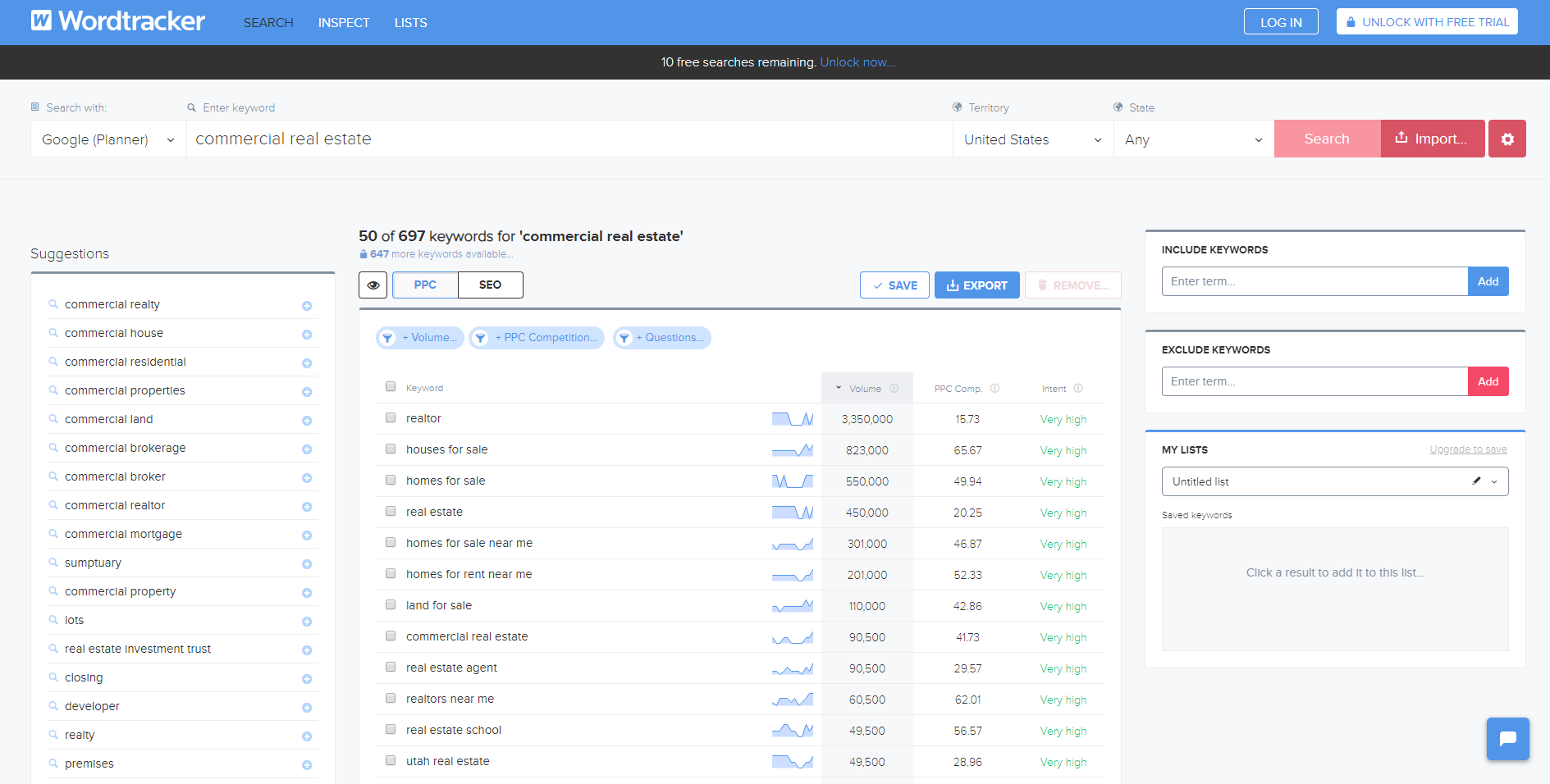
Keywords can be selected and exported as a CSV file via the blue “Export” button, as well.
Remember that keywords come in a few different forms, as well:
- Informational: These are search terms in which the end user is seeking information or an answer to a question.
- Transactional: Search terms that are geared towards purchasing property or related real estate services. Think “Toronto homes under $750k.”
- Navigational: Branded search terms when users are looking specifically for your name or business.
I recommend targeting up to ten keywords per piece of content if possible.
This will depend on how long the piece of content is and the exact topic, as some don’t have as much secondary keyword potential.
Once you have decided on a content idea and found some search terms to target, it’s time to use them in conjunction.
On-page real estate SEO
The foundation of good on-page SEO is proper keyword placement.
There are very specific parts of your content where search terms need to be entered for Google to find them. I like using SEMrush to help with this process.
This allows Google and other search engines to better understand what a page is about, improving how it’s ranked in the SERPs.
They include:
- The URL: Modify the URL of your content to have your main keyword. Shorter URLs are easier to understand for both users and search engine algorithms.
- The title: The title of your content should have one of your keywords in it.
- Page content: Keywords should be naturally used throughout the body of content, but avoid stuffing them, as this hurts rankings.
- Header tags: H1, H2, H3, and other header tags can include keywords.
- Alt text of images: Add keywords naturally while describing what the image is about. Modern blogging platforms will allow you to edit alt text easily.
- File names: Add keywords to the file names of any media you upload, presuming it’s related.
- Meta description: While it doesn’t directly affect rankings, placing keywords in the meta description will make them bold and increase the click-through rate.
- Title tag: Right above your meta description is the title tag in the SERPs. Ensure that you modify it to include one of your targeted search terms.
There are many other techniques to implement for great on-page SEO, with the next being linking.
You want to link to other related pieces of content you’ve produced within your article and third-party resources, too.
Hyperlinks are normally associated with blue highlighted text, but you can use any colour that matches your branding.
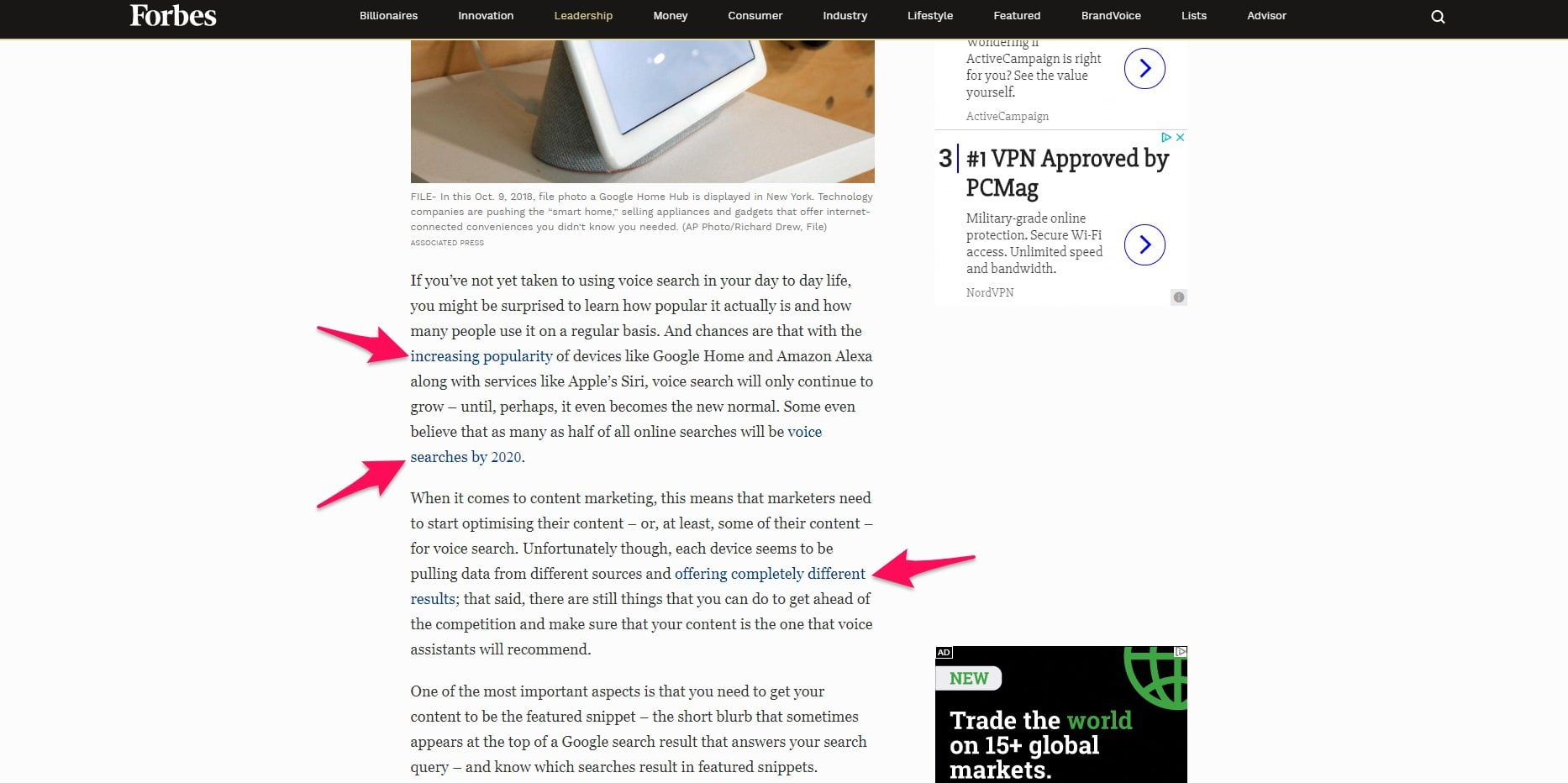
The words you highlight to create the hyperlink are called anchor text. They should be keywords, keyword variations, and non-keyword-related phrases.
Ensure that you link out to authoritative websites like Forbes, Entrepreneur, or The Huffington Post, for example.
If you link to low-quality websites, Google won’t trust your content as much.
Linking to your own content allows you to take advantage of what we call SEO juice.
Pages will have a certain authority that can then be passed onto others through internal linking. It looks something like this:
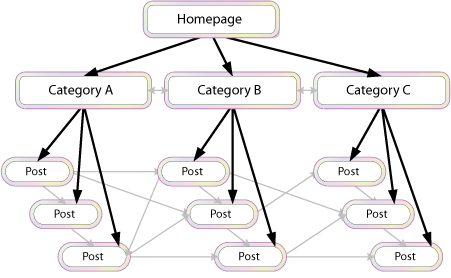
You should also set up the navigation of your website to include keywords while linking to related categories and posts.
Look how Forbes pulls this off:

Hovering over a category displays sub-categories, allowing their website to pass link juice down to other pages.
Once you can execute these fundamental SEO strategies, it’s time to begin writing!
Step 4: Produce epic real estate content
Great content is universal.
While some niches differ, generally, the rules of content marketing will apply to every industry.
Let’s touch on some of the main points.
Word count is key
Imagine you were writing a guide on how to buy your first home. The odds are that 500 words wouldn’t cut it.
It just isn’t enough to speak about finding a real estate agent, what to look for in a house, and how to balance your finances.
You might need 2,000 words or beyond for a topic like that.
That’s why word count is a huge aspect to keep in mind while producing content like articles, whitepapers, case studies, etc.
The same can be applied to videos, for example, where a longer one will pack more information versus a short one.
I suggest never going below 1,000 words and always trying to maximize content length without adding fluff.
Check out my guide on the best word count to hit #1 on Google to learn more.
Producing longer-form content also always allows you to rank for more keywords. And if you rank for more keywords, you generate increased amounts of organic traffic.
Most of the time, you simply can’t cover in-depth topics in 500-1,000 words, either. Some will require a few thousand words to get the point across and truly answer the reader’s questions.
Watch my YouTube video on content writing tips, where I touch on this further:
Make it actionable
Continuing off of the first-time home buyers example, you wouldn’t want to just mention that they need to find an agent, calculate expenses ahead of time, etc.
You would want to include the steps for finding an agent, providing a finance calculator, and extending other resources.
This makes content practical and actionable.
The reader absorbs the knowledge, and they can apply it right away.
Otherwise, what’s the point?
They’d browse through your article and leave while giving another realtor their business and not you.
RBC schools us on how to do this effortlessly.
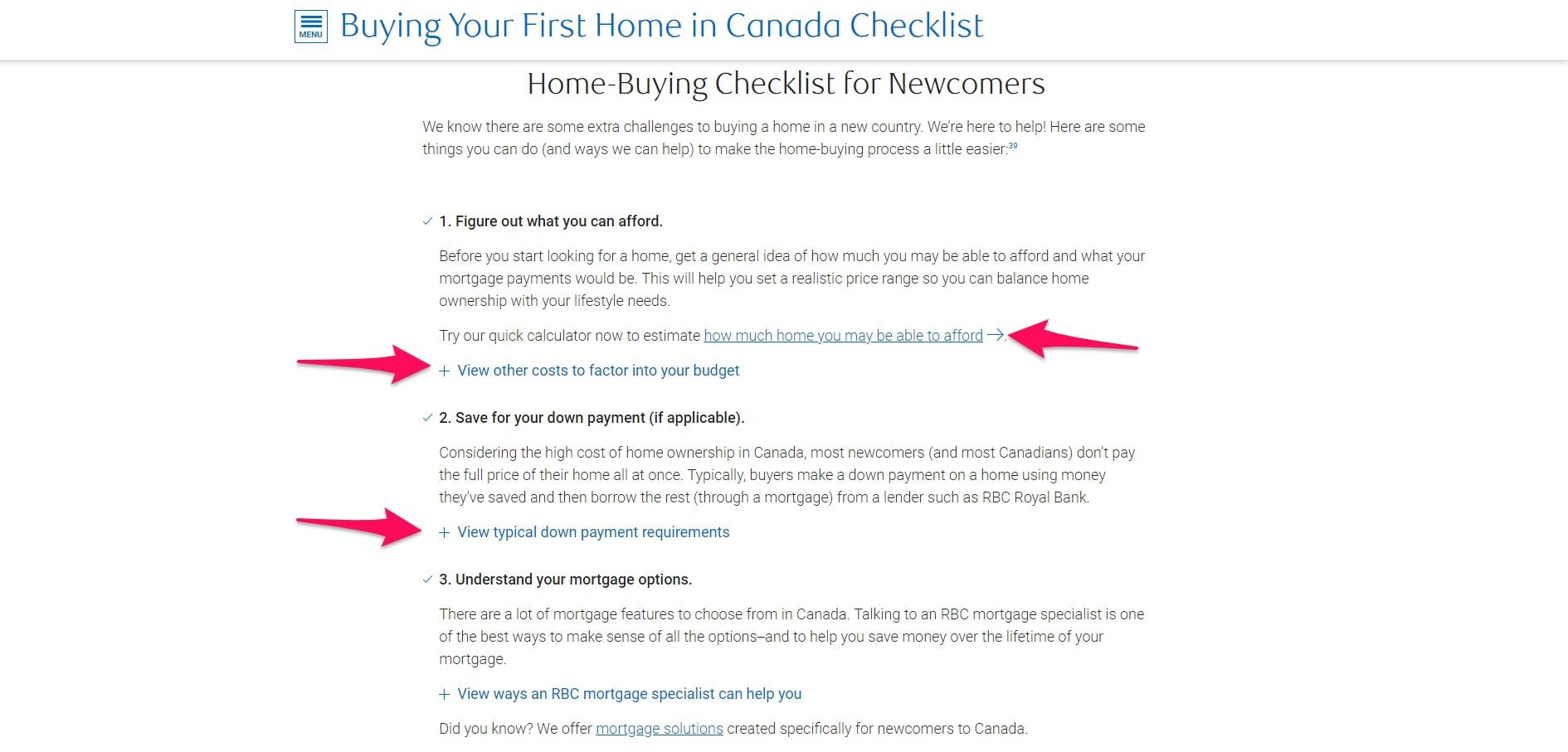
One of their articles links to a mortgage payment calculator, a list of costs to factor into budgeting and typical down payment requirements.
A.K.A it’s very practical.
Include a call to action
The goal of content marketing is to draw relevant readers in and convert them into customers, right?
That won’t happen if you don’t use a call to action.
These are words and phrases that tell users to take the next step in the buyer’s journey.
I recommend having at least one call to action in every single piece of content. It can be placed at the beginning, middle, or end.
For example, at the end of CIBC’s mortgage-related content, they include calls to action for their services.
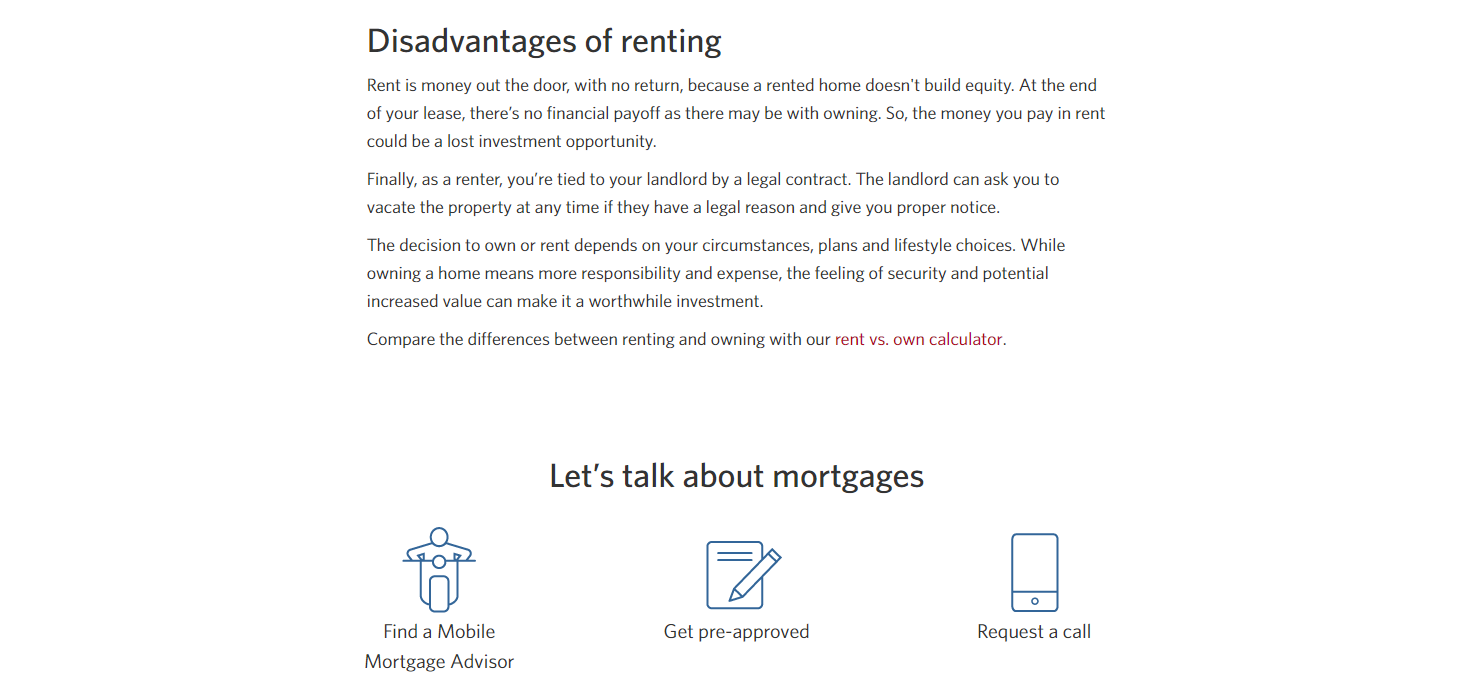
A CTA can be used to achieve any business goal, too.
You can implement them for downloading a lead magnet, your services, scheduling a consultation or anything that helps move people closer to the sale.
Final thoughts on content marketing for real estate
Creating content as a real estate agent or company can help attract clients to you without lifting a finger.
It begins by first studying your ideal customer and understanding their demographics, questions, and problems.
From there, you can begin researching topics to write about with tools like Hubspot’s idea generator or brainstorming them on your own.
Then, I suggest taking the time to research keywords with a tool like Wordtracker and placing them in the areas I outlined earlier.
This will help you drive organic traffic to your website, which ultimately can convert into paying clients.
Learn proper on-page SEO, as well. This includes keyword placement, internal/external linking, and funneling link juice to other parts of your site.
Lastly, write actionable long-form content that answers questions and improves the life of the reader.
Add a call to action within the content, and you’re bound to have interested leads reaching out for your services.
Check out my online courses to learn more about online marketing














